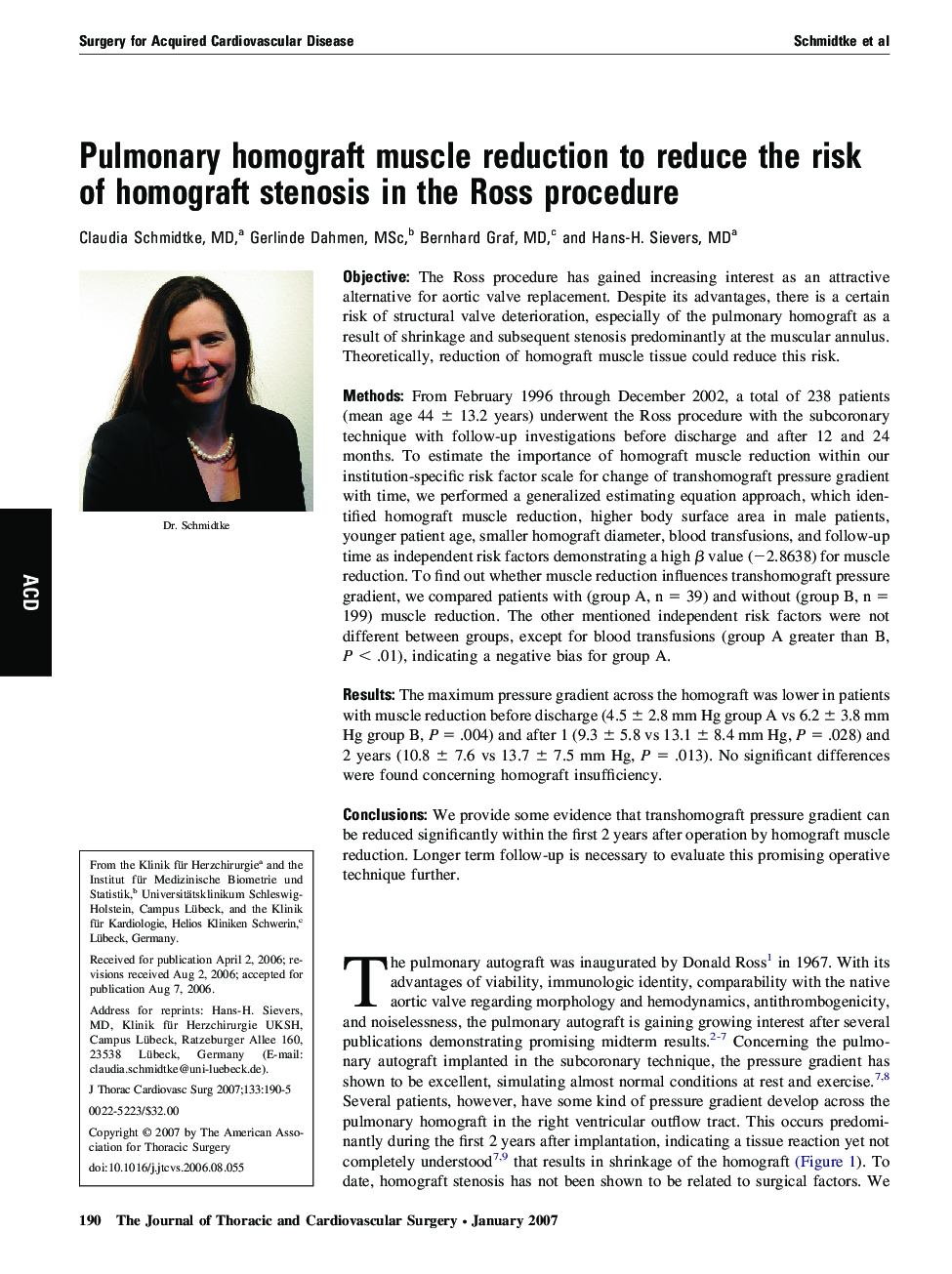| کد مقاله | کد نشریه | سال انتشار | مقاله انگلیسی | نسخه تمام متن |
|---|---|---|---|---|
| 2984883 | 1578702 | 2007 | 6 صفحه PDF | دانلود رایگان |

ObjectiveThe Ross procedure has gained increasing interest as an attractive alternative for aortic valve replacement. Despite its advantages, there is a certain risk of structural valve deterioration, especially of the pulmonary homograft as a result of shrinkage and subsequent stenosis predominantly at the muscular annulus. Theoretically, reduction of homograft muscle tissue could reduce this risk.MethodsFrom February 1996 through December 2002, a total of 238 patients (mean age 44 ± 13.2 years) underwent the Ross procedure with the subcoronary technique with follow-up investigations before discharge and after 12 and 24 months. To estimate the importance of homograft muscle reduction within our institution-specific risk factor scale for change of transhomograft pressure gradient with time, we performed a generalized estimating equation approach, which identified homograft muscle reduction, higher body surface area in male patients, younger patient age, smaller homograft diameter, blood transfusions, and follow-up time as independent risk factors demonstrating a high β value (−2.8638) for muscle reduction. To find out whether muscle reduction influences transhomograft pressure gradient, we compared patients with (group A, n = 39) and without (group B, n = 199) muscle reduction. The other mentioned independent risk factors were not different between groups, except for blood transfusions (group A greater than B, P < .01), indicating a negative bias for group A.ResultsThe maximum pressure gradient across the homograft was lower in patients with muscle reduction before discharge (4.5 ± 2.8 mm Hg group A vs 6.2 ± 3.8 mm Hg group B, P = .004) and after 1 (9.3 ± 5.8 vs 13.1 ± 8.4 mm Hg, P = .028) and 2 years (10.8 ± 7.6 vs 13.7 ± 7.5 mm Hg, P = .013). No significant differences were found concerning homograft insufficiency.ConclusionsWe provide some evidence that transhomograft pressure gradient can be reduced significantly within the first 2 years after operation by homograft muscle reduction. Longer term follow-up is necessary to evaluate this promising operative technique further.
Journal: The Journal of Thoracic and Cardiovascular Surgery - Volume 133, Issue 1, January 2007, Pages 190–195